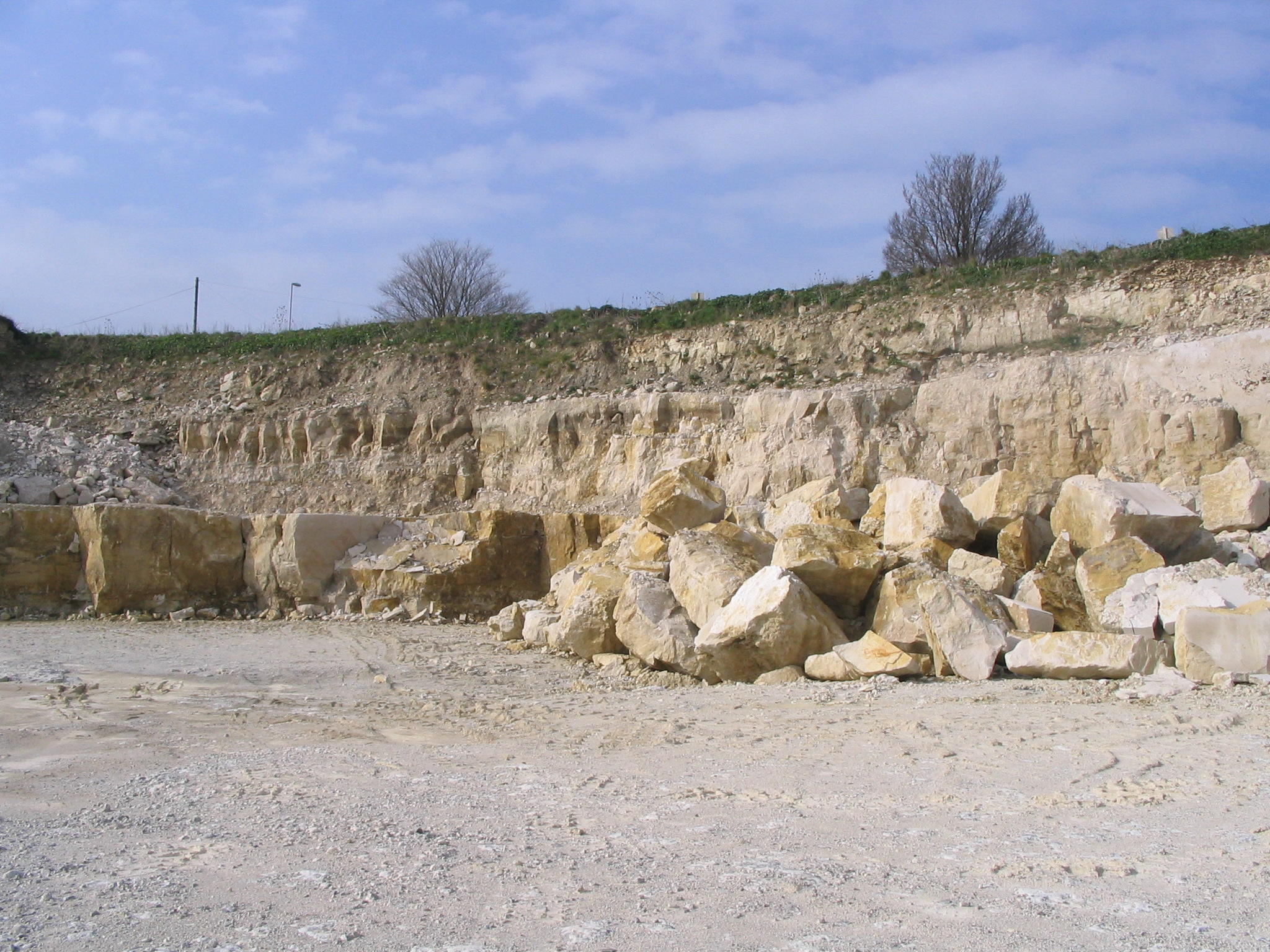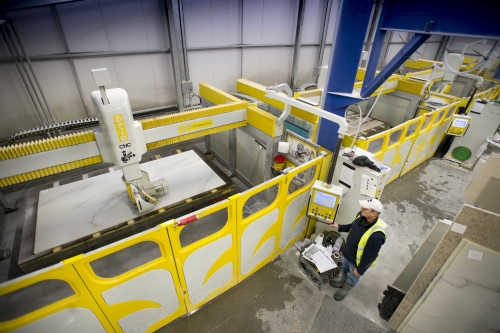Sustainable stone for the construction industry

|
| A look at stone from the point of view of sustainability, environmental impact and the effect on human health and wellbeing. |
Contents |
[edit] Characteristics of stone
[edit] No embedded carbon
Unlike many other building materials, the quarrying and fabrication of stone releases no embedded carbon, the only greenhouse gases released during quarrying are those used by the fuel to power the quarrying equipment.
[edit] Longevity
Stone is the ultimate long-term building material as the plethora of historical buildings still standing after millennia attests. Used both internally and externally, stone will last for as long as the building with very little maintenance.
[edit] No chemical treatment
Stone does not require treatment with chemicals to render it waterproof and in itself does not pollute or contribute to sick building syndrome, although care must be taken in the choice of fixing materials.
[edit] Recyclable
Stone can be recycled at the end of the building’s life. Building stone is reusable in another building, and any stone fittings that are broken or damaged in removal can be used for mosaics, construction ballast and so on.
[edit] Quarrying stone
To ensure maximum sustainability, specifiers should take care to choose a stone which comes from a plentiful resource rather than a rare or scarce one, and to pick a quarry that is responsibly managed from an environmental point of view as well as a human one.
The Stone Federation has established the Ethical Stone Register, which allows you to verify whether the stone contractor you are using is taking measures to ensure that the stone it buys has been sourced responsibly and ethically.
[edit] Transporting stone
Choosing stones from local quarries minimises the greenhouse gas emissions involved in transporting a heavy material. It also allows you to verify easily that the quarry is responsibly managed. Likewise, the choice of a stonemason close to the installation site ensures that CO2 emissions during transportation of the finished material are minimised.
[edit] Stone fabrication
Select a stonemason that has an environmentally-friendly factory to ensure minimum harm to the environment. The fabrication of finished items from stone involves cutting and in some cases polishing which requires power and water. Modern factories will have taken steps to ensure that the majority of power needs are met by renewable sources and that rainwater harvesting and recycling of greywater makes them self-sufficient, rather than using-up precious resources. Recycling waste material is also a factor that should be taken into account.
[edit] Installing stone
The use of a fabricator close to the site will minimise CO2 emissions during transportation. The method of installation should also use techniques and materials that cause the least possible harm to the environment and to human health.
--Stonecircle 12:38, 03 Sep 2019 (BST)
[edit] Related articles on Designing Buildings Wiki
- Building with structural stone.
- Choosing stone.
- Defects in stonework.
- Finding stone to conserve historic buildings.
- Inspecting stone sample panels.
- Kentish ragstone.
- Masonry.
- Modern Stonemasonry.
- Natural stone cladding.
- Natural stone for Interiors.
- Natural stone tiles.
- Natural stone.
- Patio stone.
- Penarth Alabaster.
- Portland Stone.
- Sourcing indigenous stone.
- Sourcing stone to repair Exeter Cathedral.
- Stone dressing.
- Two New Ludgate Portland Stone Feature Wall.
- Types of stone.
- Use of Stone in Monks Lantern Weybridge.
[edit] External references
Featured articles and news
CIOB report; a blueprint for SDGs and the built environment
Pairing the Sustainable Development Goals with projects.
Latest Build UK Building Safety Regime explainer published
Key elements in one short, now updated document.
UKGBC launch the UK Climate Resilience Roadmap
First guidance of its kind on direct climate impacts for the built environment and how it can adapt.
CLC Health, Safety and Wellbeing Strategy 2025
Launched by the Minister for Industry to look at fatalities on site, improving mental health and other issues.
One of the most impressive Victorian architects. Book review.
Common Assessment Standard now with building safety
New CAS update now includes mandatory building safety questions.
RTPI leader to become new CIOB Chief Executive Officer
Dr Victoria Hills MRTPI, FICE to take over after Caroline Gumble’s departure.
Social and affordable housing, a long term plan for delivery
The “Delivering a Decade of Renewal for Social and Affordable Housing” strategy sets out future path.
A change to adoptive architecture
Effects of global weather warming on architectural detailing, material choice and human interaction.
The proposed publicly owned and backed subsidiary of Homes England, to facilitate new homes.
How big is the problem and what can we do to mitigate the effects?
Overheating guidance and tools for building designers
A number of cool guides to help with the heat.
The UK's Modern Industrial Strategy: A 10 year plan
Previous consultation criticism, current key elements and general support with some persisting reservations.
Building Safety Regulator reforms
New roles, new staff and a new fast track service pave the way for a single construction regulator.
Architectural Technologist CPDs and Communications
CIAT CPD… and how you can do it!
Cooling centres and cool spaces
Managing extreme heat in cities by directing the public to places for heat stress relief and water sources.
Winter gardens: A brief history and warm variations
Extending the season with glass in different forms and terms.
Restoring Great Yarmouth's Winter Gardens
Transforming one of the least sustainable constructions imaginable.

























